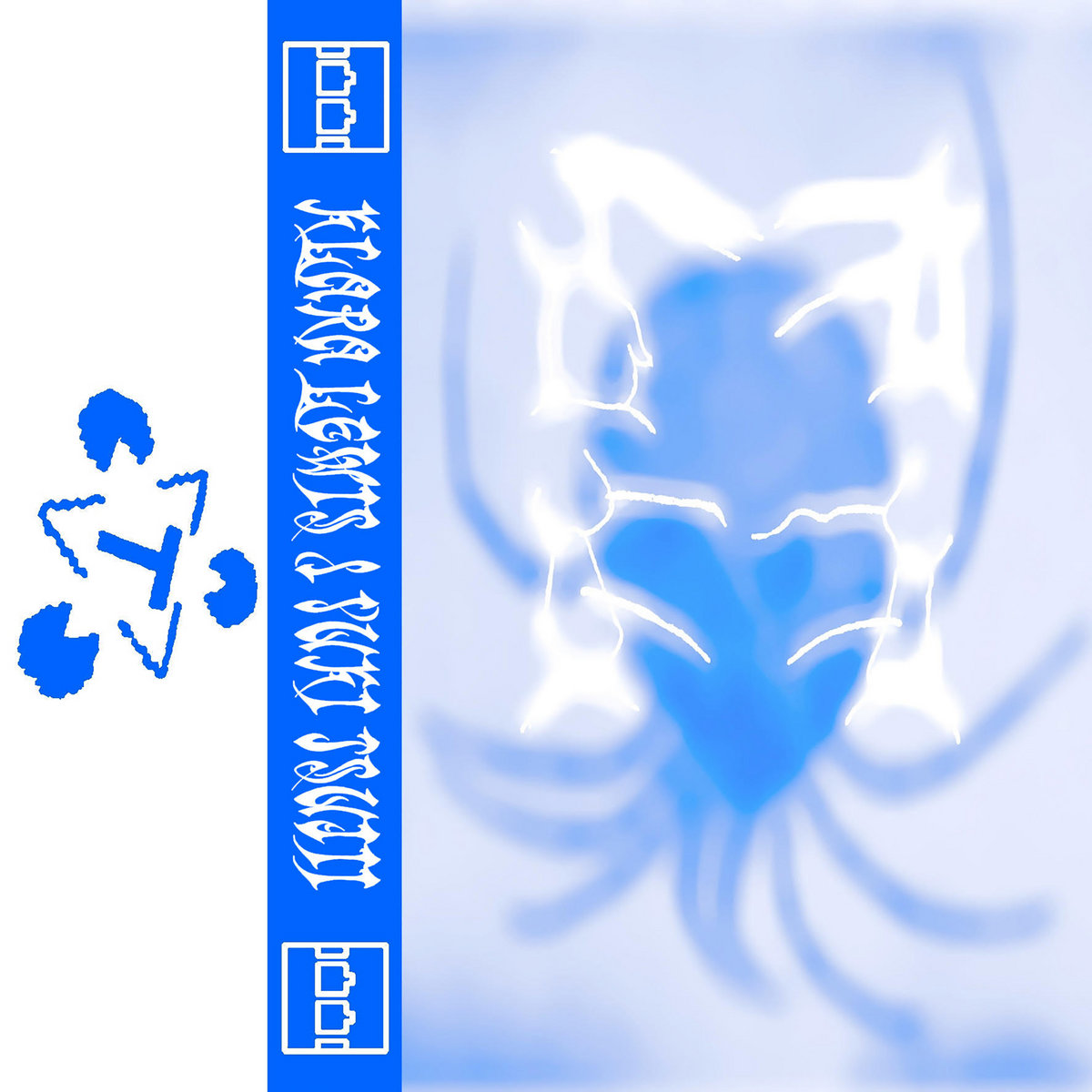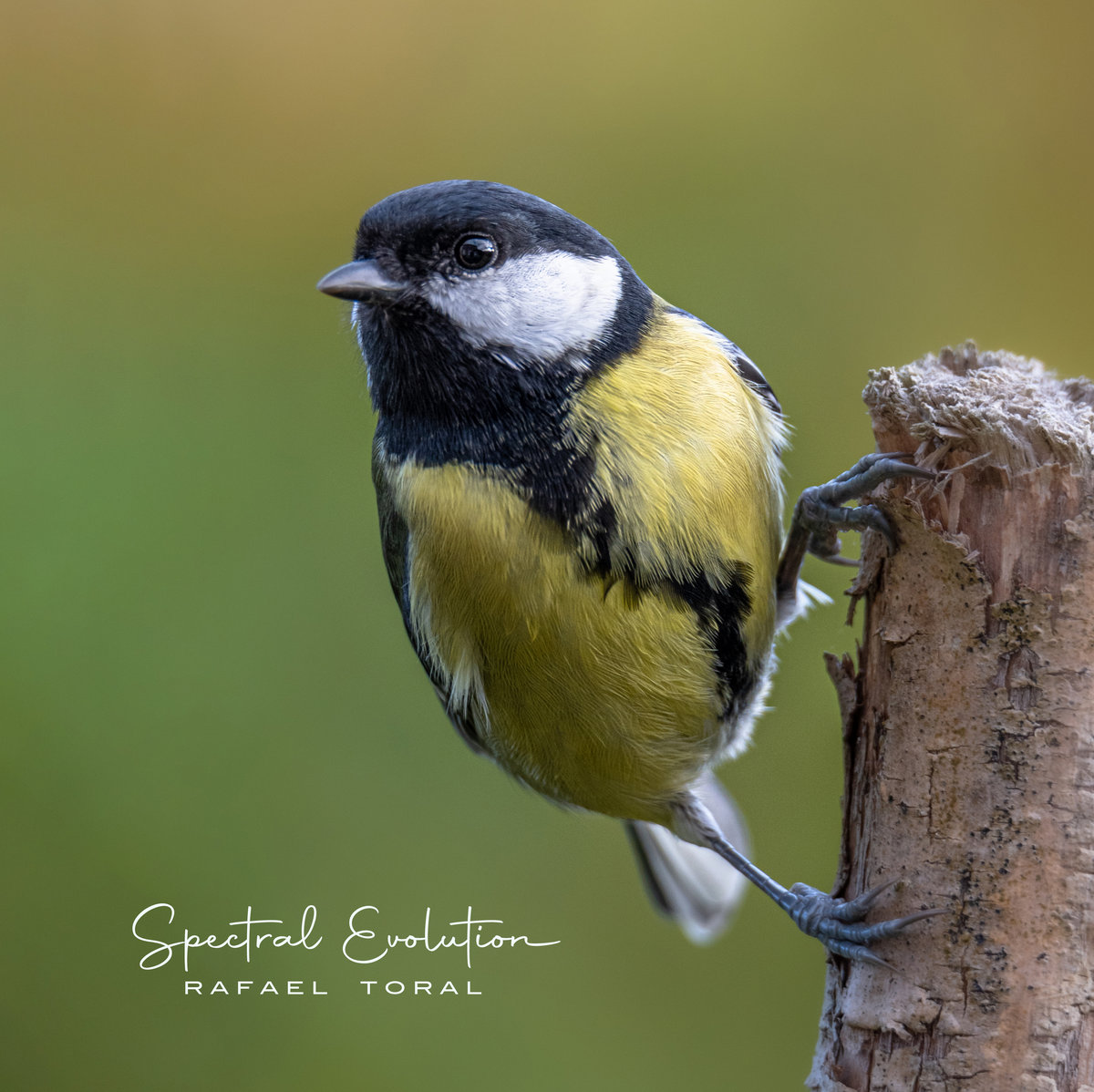 This latest full-length from Australian composer Madeleine Cocolas is billed as a companion piece to 2022’s acclaimed Spectral, as the two albums have something of a conceptual yin/yang relationship: Spectral was devoted to “evoking memories and emotions,” while Bodies “is about being present in your body.” The title also has a dual meaning this time around, as Cocolas sought to explore “similarities between bodies of water and human bodies” and “blur the boundaries between them.” As is the case with most conceptual inspirations behind instrumental albums, it is hard to say how much of that actually comes through in the music, but it makes for interesting contextual background and it seems to have triggered a significant creative evolution, as Madeleine makes beautiful use of manipulated field recordings. That element alone is enough to set her apart from other ambient/drone artists in the Room40 milieu, but I was also struck by her talents for sound design and virtuosic ability to interweave countless moving parts in dynamically compelling ways. At its best, Bodies feels like a minor deep listening/headphone masterpiece.
This latest full-length from Australian composer Madeleine Cocolas is billed as a companion piece to 2022’s acclaimed Spectral, as the two albums have something of a conceptual yin/yang relationship: Spectral was devoted to “evoking memories and emotions,” while Bodies “is about being present in your body.” The title also has a dual meaning this time around, as Cocolas sought to explore “similarities between bodies of water and human bodies” and “blur the boundaries between them.” As is the case with most conceptual inspirations behind instrumental albums, it is hard to say how much of that actually comes through in the music, but it makes for interesting contextual background and it seems to have triggered a significant creative evolution, as Madeleine makes beautiful use of manipulated field recordings. That element alone is enough to set her apart from other ambient/drone artists in the Room40 milieu, but I was also struck by her talents for sound design and virtuosic ability to interweave countless moving parts in dynamically compelling ways. At its best, Bodies feels like a minor deep listening/headphone masterpiece.
The opening “Bodies I” provides an alluring introduction to Cocolas’s current vision, as it slowly fades in as a seismic drone throb beneath gently undulating and murmuring strings lingering in a flickering state of suspended animation. Gradually, it intensifies in power and takes on a more spacy, dreamlike tone, but the overall effect is akin to that of a billowing cloud of blissed-out ambiance with a roiling and unpredictable swirl of anguish and unease at its center. It is probably one of the most mesmerizing headphone pleasures on the album, but the following “Drift” is a similarly inspired slow burn. For one, it is the first piece to noticeably involve water sounds and her talent for sound design transforms those sounds into something that feels wonderfully immersive, viscous, and physical. “Drift” is also an unusually melodic piece, as a pulsing organ melody is gradually fleshed out with warm, rich chords. Also unusual: the chords and melody predictably steal the focus initially, but closer listening reveals a vivid psychotropic wonderland beneath the surface, as the layers of moving parts increasingly bend, smear, pan, change speeds, change rhythms, and organically ebb and flow around the melody. To my ears, that is what makes Madeleine Cocolas’s work feel like something special and singular: her genius for weaving together richly detailed layers of continually evolving field recordings, processed voices, and electronic instruments into a seamless organic fantasia.


 This is the vinyl debut from American Primitive-inspired French guitarist Raoul Eden, but it previously surfaced as a self-released CD back in 2023 (a previous “incarnation,” if you will). That makes the chronology of Eden’s evolution a little blurry, as his other album (Anima, released on Scissor Tail) was recorded that same year. In any case, Incarnation is an absolute tour de force, as Eden tries his damndest to fill the void left by Jack Rose’s passing and gamely spices up his “primitive psychedelic blues” vision by incorporating Indian, Arabic, Turkish, Moroccan, and Taureg influences. Obviously, the solo steel string guitarist tradition of looking to the East for cool ideas goes back to at least Robbie Basho, but Eden executes that assimilation quite beautifully (and unusually seamlessly). In fact, Eden executes just about everything beautifully and that is the bit that elevates Incarnation into something quite striking and singular, as he brings an ecstatic intensity to almost every single one of these six pieces, resulting in a strain of fingerstyle guitar that often gloriously feels like a runaway train leaving a rain of sparks in its wake.
This is the vinyl debut from American Primitive-inspired French guitarist Raoul Eden, but it previously surfaced as a self-released CD back in 2023 (a previous “incarnation,” if you will). That makes the chronology of Eden’s evolution a little blurry, as his other album (Anima, released on Scissor Tail) was recorded that same year. In any case, Incarnation is an absolute tour de force, as Eden tries his damndest to fill the void left by Jack Rose’s passing and gamely spices up his “primitive psychedelic blues” vision by incorporating Indian, Arabic, Turkish, Moroccan, and Taureg influences. Obviously, the solo steel string guitarist tradition of looking to the East for cool ideas goes back to at least Robbie Basho, but Eden executes that assimilation quite beautifully (and unusually seamlessly). In fact, Eden executes just about everything beautifully and that is the bit that elevates Incarnation into something quite striking and singular, as he brings an ecstatic intensity to almost every single one of these six pieces, resulting in a strain of fingerstyle guitar that often gloriously feels like a runaway train leaving a rain of sparks in its wake. I am always eager to hear anything new from the reliably weird and inventive Klara Lewis, but the unpredictability of her collaborative releases is especially pronounced. Notably, Salt Water is the first of those collaborations in which I was not previously familiar with her creative foil. It also seems like quite a leftfield pairing on paper, given that Yuki Tsujii is best known as the guitarist for a hard-to-categorize Japanese rock band based in London (Bo Ningen). Fortunately, everything made sense once I learned that Tsujii is now based in Stockholm (Lewis is Swedish) and that he had previously collaborated with both Faust and Keiji Haino (his primal, convulsive playing here would be right at home on an album by the latter). Also of note: Lewis is described as a "loop finder" in the album's description, which feels like an extremely apt description of her role on Salt Water. Unsurprisingly, the loops that she found are extremely cool, resulting in an album that often sounds like scrabbling guitar noise assaulting an eclectic array of '60s exotica, classical, and film score samples.
I am always eager to hear anything new from the reliably weird and inventive Klara Lewis, but the unpredictability of her collaborative releases is especially pronounced. Notably, Salt Water is the first of those collaborations in which I was not previously familiar with her creative foil. It also seems like quite a leftfield pairing on paper, given that Yuki Tsujii is best known as the guitarist for a hard-to-categorize Japanese rock band based in London (Bo Ningen). Fortunately, everything made sense once I learned that Tsujii is now based in Stockholm (Lewis is Swedish) and that he had previously collaborated with both Faust and Keiji Haino (his primal, convulsive playing here would be right at home on an album by the latter). Also of note: Lewis is described as a "loop finder" in the album's description, which feels like an extremely apt description of her role on Salt Water. Unsurprisingly, the loops that she found are extremely cool, resulting in an album that often sounds like scrabbling guitar noise assaulting an eclectic array of '60s exotica, classical, and film score samples. odd collaboration in multiple ways. Andrew Quitter (Suburbia Melting, Regosphere) and Jonathan Canady (Deathpile, Dead World) is not the noise excursion I would have expected based on the artists involved. Instead, it is more of a deconstructed sludgy rock/metal album, with production as influenced by noise as it is cinematic sound design.
odd collaboration in multiple ways. Andrew Quitter (Suburbia Melting, Regosphere) and Jonathan Canady (Deathpile, Dead World) is not the noise excursion I would have expected based on the artists involved. Instead, it is more of a deconstructed sludgy rock/metal album, with production as influenced by noise as it is cinematic sound design. This Swiss percussionist has been quietly carving out a very cool and unique niche for himself over the last decade, as he continually finds unusual conceptual scenarios to combine with his virtuosic playing. I greatly enjoyed 2021's aptly titled Locked Grooves, but had not yet delved too deeply into his earlier work, so I had missed the first installment of Hidden Tracks: 2017's Basel – Genève. For that album, Sartorius brought his drumsticks along for a 10-day, 270km hike along Switzerland's Jura Ridgeway Trail and recorded improvised beats on whatever intriguing sound sources he encountered (trees, empty silos, corn stalks, etc.). On this latest installment, his journey is now vertical, as Sartorius kept a similar beat diary as he climbed from the Italian village of Domodossola "to the peak of Weissmies (4017m above sea level) in the Swiss Valais." In theory, that upped the game considerably constraint-wise, as Sartorius gradually leaves behind both humanity and trees in his ascent, but that comparative dearth of available sound sources was no match for his resourceful inventiveness.
This Swiss percussionist has been quietly carving out a very cool and unique niche for himself over the last decade, as he continually finds unusual conceptual scenarios to combine with his virtuosic playing. I greatly enjoyed 2021's aptly titled Locked Grooves, but had not yet delved too deeply into his earlier work, so I had missed the first installment of Hidden Tracks: 2017's Basel – Genève. For that album, Sartorius brought his drumsticks along for a 10-day, 270km hike along Switzerland's Jura Ridgeway Trail and recorded improvised beats on whatever intriguing sound sources he encountered (trees, empty silos, corn stalks, etc.). On this latest installment, his journey is now vertical, as Sartorius kept a similar beat diary as he climbed from the Italian village of Domodossola "to the peak of Weissmies (4017m above sea level) in the Swiss Valais." In theory, that upped the game considerably constraint-wise, as Sartorius gradually leaves behind both humanity and trees in his ascent, but that comparative dearth of available sound sources was no match for his resourceful inventiveness. Across the 16 songs that make up this album, the title makes perfect sense: a myriad of abstract, expansive pieces, full-fledged songs, and odd little miniatures. All of them are linked together with Robert Poss's infinite love for the electric guitar, however, and as a whole, it encapsulates much of the sound he has cultivated throughout his entire career.
Across the 16 songs that make up this album, the title makes perfect sense: a myriad of abstract, expansive pieces, full-fledged songs, and odd little miniatures. All of them are linked together with Robert Poss's infinite love for the electric guitar, however, and as a whole, it encapsulates much of the sound he has cultivated throughout his entire career. I believe I stumbled upon Moonshake's singular 1992 debut full-length by blind luck at a used record store, but I cannot remember if I picked it up because I was already vaguely aware that Margaret Fiedler was cool or if it was still pre-Laika. In any case, I always thought of Moonshake primarily as Fieldler's alternately frustrating and brilliant first band. In hindsight, however, I failed to appreciate how truly radical this foursome were during their brief flourish and dearly wish that I had dug a bit deeper back then, as Eva Luna could have (and should have) been my gateway into an amazing world of killer underground music that I was not yet aware of (krautrock, post-punk, free jazz, Jamaican dub, and even the C86 scene). Listening to this expanded reissue now with considerably more adventurous ears, I still find this album oft-frustrating, but I am newly struck by how almost every song features at least one moment where Moonshake sounded like the best band on the goddamn planet. That white-hot inspiration did not always sustain itself for an entire song, but this reissue beautifully strengthens the original album with some welcome gems from the band's early EPs.
I believe I stumbled upon Moonshake's singular 1992 debut full-length by blind luck at a used record store, but I cannot remember if I picked it up because I was already vaguely aware that Margaret Fiedler was cool or if it was still pre-Laika. In any case, I always thought of Moonshake primarily as Fieldler's alternately frustrating and brilliant first band. In hindsight, however, I failed to appreciate how truly radical this foursome were during their brief flourish and dearly wish that I had dug a bit deeper back then, as Eva Luna could have (and should have) been my gateway into an amazing world of killer underground music that I was not yet aware of (krautrock, post-punk, free jazz, Jamaican dub, and even the C86 scene). Listening to this expanded reissue now with considerably more adventurous ears, I still find this album oft-frustrating, but I am newly struck by how almost every song features at least one moment where Moonshake sounded like the best band on the goddamn planet. That white-hot inspiration did not always sustain itself for an entire song, but this reissue beautifully strengthens the original album with some welcome gems from the band's early EPs. This album is definitely one of the more unlikely underground hits to cross my path in recent memory, as this strikingly unique bagpipe performance first quietly surfaced as an extremely limited CDr back in 2017 on Strasbourg's Soleils Bleus label. Last year, however, it got a well-deserved vinyl resurrection on Belgium's forward-thinking Morc Records and it sold out almost immediately (as did last month's repress, unsurprisingly). Notably, the bagpipe has historically not been my favorite instrument, but I've said the same thing in the past about harps and harpsichords only to have my mind blown by Joanna Newsom, Mary Lattimore, and Catherine Christer Hennix, so this is merely the latest revelation that any instrument can sound amazing in the right hands. I also never expected the French traditional music scene to be the source of so many stellar contemporary albums, yet Lise and Lisa have just joined my personal pantheon of Gallic folkies (France, Tanz Mein Herz, etc.) who have dropped killer left-field psych gems in recent years. That is an especially impressive feat for Kaüffert, given that she is a German bagpiper.
This album is definitely one of the more unlikely underground hits to cross my path in recent memory, as this strikingly unique bagpipe performance first quietly surfaced as an extremely limited CDr back in 2017 on Strasbourg's Soleils Bleus label. Last year, however, it got a well-deserved vinyl resurrection on Belgium's forward-thinking Morc Records and it sold out almost immediately (as did last month's repress, unsurprisingly). Notably, the bagpipe has historically not been my favorite instrument, but I've said the same thing in the past about harps and harpsichords only to have my mind blown by Joanna Newsom, Mary Lattimore, and Catherine Christer Hennix, so this is merely the latest revelation that any instrument can sound amazing in the right hands. I also never expected the French traditional music scene to be the source of so many stellar contemporary albums, yet Lise and Lisa have just joined my personal pantheon of Gallic folkies (France, Tanz Mein Herz, etc.) who have dropped killer left-field psych gems in recent years. That is an especially impressive feat for Kaüffert, given that she is a German bagpiper. Before I heard this album, I mistakenly believed that I had a reasonable familiarity with Rafael Toral's oeuvre, as I had heard and enjoyed a handful of his classic guitar-era albums such as 2001's Violence of Discovery and Calm of Acceptance. That said, it had been a while since I had kept tabs on his work, so I was quite curious to hear what made this "quintessential album of guitar music" exciting enough to reawaken Jim O'Rourke's decades-dormant Moikai label. As it turns out, absolutely everything about Spectral Evolution feels like a goddamn revelation to me and I am now kicking myself for sleeping on Toral's post-guitar Space Program-era of experimentation with self-built instruments. The psychotropic omnipresence of those self-built instruments makes it amusingly misleading to call Spectral Evolution Toral's return to guitar music, but if the presence of some recognizable guitar sounds lures more listeners towards this one-of-a-kind work of genius, I believe that claim has served a worthy purpose. Listening to this album was like hearing classic Merzbow or My Cat Is An Alien for the first time, as Toral plays entirely by his own set of rules and succeeds spectacularly.
Before I heard this album, I mistakenly believed that I had a reasonable familiarity with Rafael Toral's oeuvre, as I had heard and enjoyed a handful of his classic guitar-era albums such as 2001's Violence of Discovery and Calm of Acceptance. That said, it had been a while since I had kept tabs on his work, so I was quite curious to hear what made this "quintessential album of guitar music" exciting enough to reawaken Jim O'Rourke's decades-dormant Moikai label. As it turns out, absolutely everything about Spectral Evolution feels like a goddamn revelation to me and I am now kicking myself for sleeping on Toral's post-guitar Space Program-era of experimentation with self-built instruments. The psychotropic omnipresence of those self-built instruments makes it amusingly misleading to call Spectral Evolution Toral's return to guitar music, but if the presence of some recognizable guitar sounds lures more listeners towards this one-of-a-kind work of genius, I believe that claim has served a worthy purpose. Listening to this album was like hearing classic Merzbow or My Cat Is An Alien for the first time, as Toral plays entirely by his own set of rules and succeeds spectacularly. I tend to enjoy damn near everything that Sweden's XKatedral label releases, but this half-disturbing/half-transcendent tour de force by co-founder Maria W. Horn still managed to completely blindside me. Panoptikon's four-part suite was originally composed for a macabre installation at the "disbanded Vita Duvan (White Dove) panopticon prison in Luleå, Sweden." Being a panopticon, Vita Duvan had an unusual circular design "to create a sense of omniscient surveillance," but that is just the tip of a very grim iceberg, as it was also known for its brutal isolation tactics as well as rampant torture and execution. While the prison mercifully ceased operations in 1979, I suspect I would've needed months of therapy to recover from Horn's installation alone, as it pulsed in synchronization with the prison's lights and the cells contained speakers broadcasting the imagined voices of the doomed prisoners. Thankfully, the decontextualized album is considerably less harrowing than its origin suggests, as its dark choral opening quickly expands into an immersive swirl of heady drones, spacy synths, and timelessly beautiful vocal motifs.
I tend to enjoy damn near everything that Sweden's XKatedral label releases, but this half-disturbing/half-transcendent tour de force by co-founder Maria W. Horn still managed to completely blindside me. Panoptikon's four-part suite was originally composed for a macabre installation at the "disbanded Vita Duvan (White Dove) panopticon prison in Luleå, Sweden." Being a panopticon, Vita Duvan had an unusual circular design "to create a sense of omniscient surveillance," but that is just the tip of a very grim iceberg, as it was also known for its brutal isolation tactics as well as rampant torture and execution. While the prison mercifully ceased operations in 1979, I suspect I would've needed months of therapy to recover from Horn's installation alone, as it pulsed in synchronization with the prison's lights and the cells contained speakers broadcasting the imagined voices of the doomed prisoners. Thankfully, the decontextualized album is considerably less harrowing than its origin suggests, as its dark choral opening quickly expands into an immersive swirl of heady drones, spacy synths, and timelessly beautiful vocal motifs.
